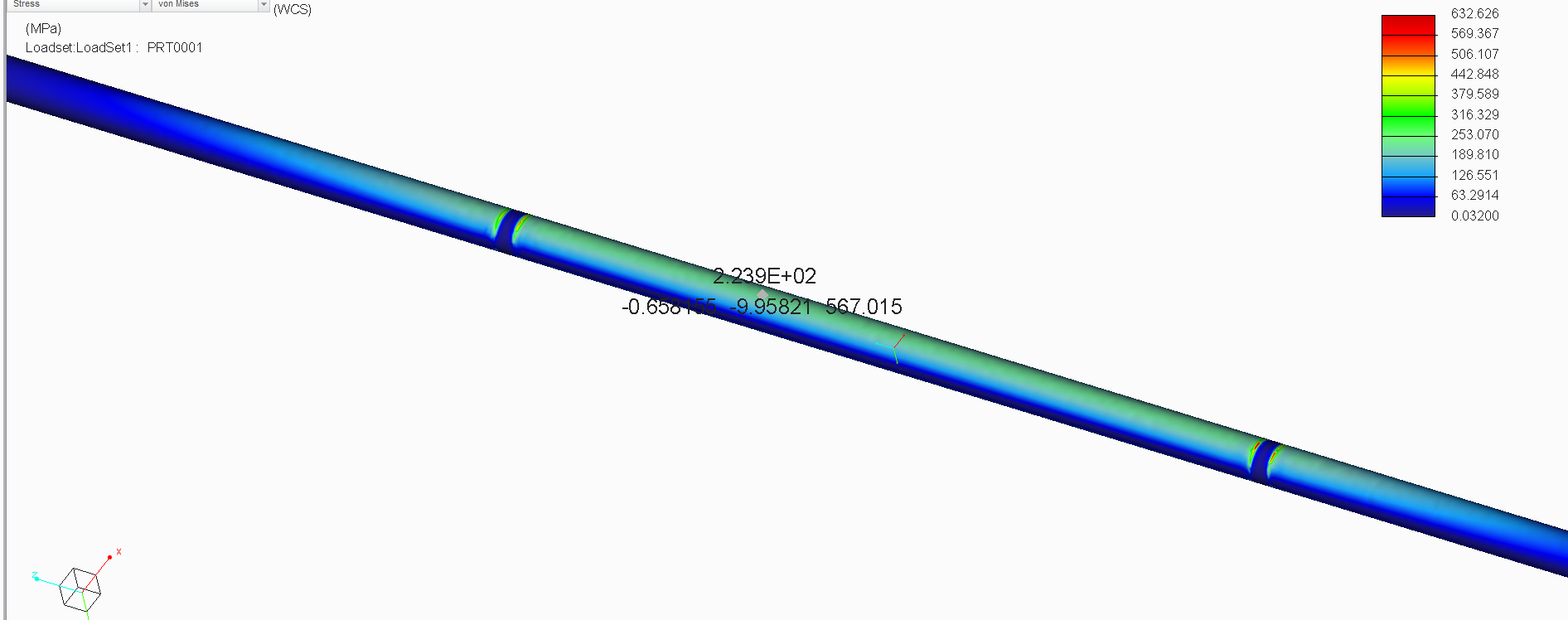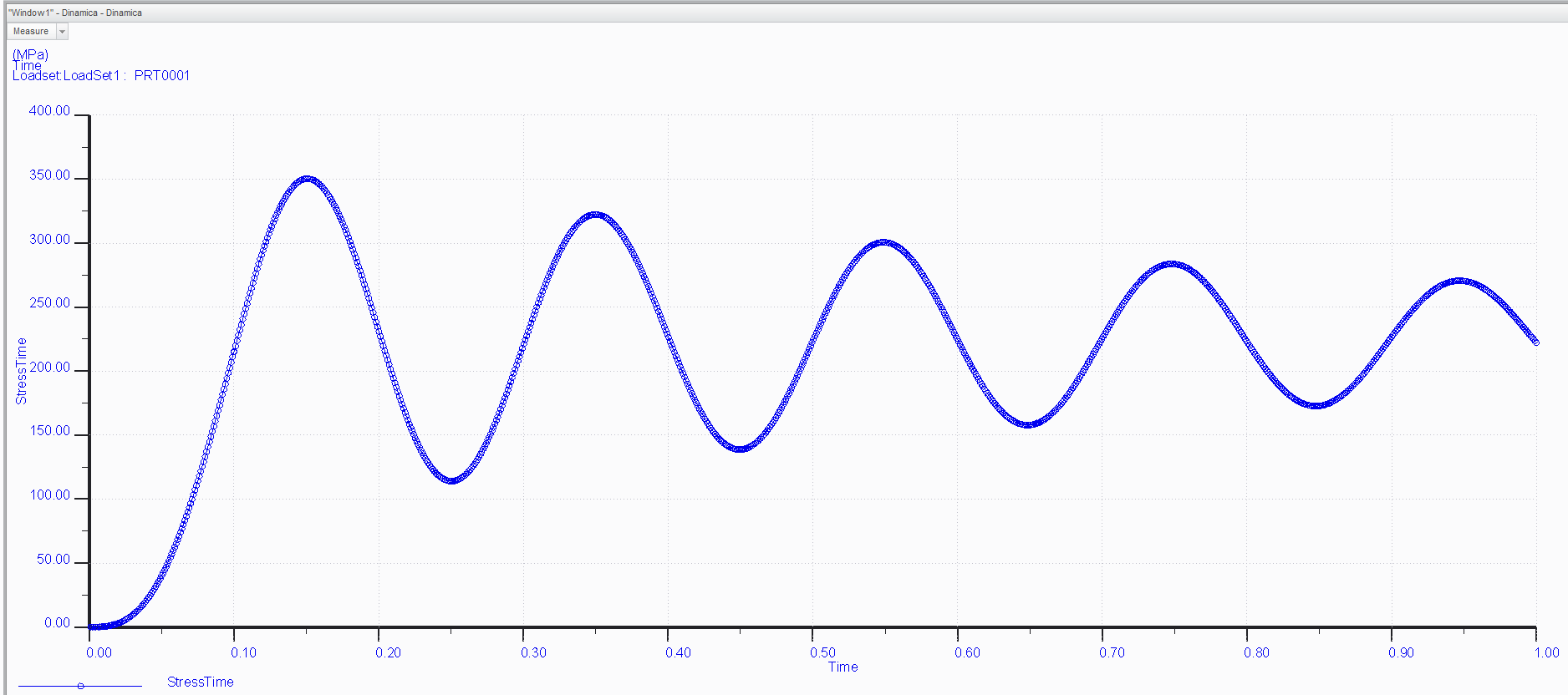OP is not correct on the effects of damping - it should hardly have any effect on the first sine wave, only reducing the subsequent oscillations.
I'm sorry but you're wrong.
Suppose that I'm holding the weight over the beam,
the weight touch the beam without load it. In that time, there is no load over the beam: the system have only potential energy.
Then, I release the weight. Part of the potential energy will be converted into elastic energy, the remaining part will be converted into heat (because of dissipation).
It's not simple to calculate by hand, because that part of energy depend on the velocity.
If part of energy will be converted on heat, the deflection of the beam will be less than the deflection calculated without dissipation.
Less deflection = less maximum stress.
That's why in FEM the maximum stress is 350 MPa, and not 450 MPa as calculated by hand.
I'm pretty sure about that, because I studied a lot car suspension
> How well does the dynamic simulation match the real motion? You stated that "I simply placed the load at time 0 (what's happen in reality)," but that cannot be if you also say there's no impact, since the instantaneous loading is an impact. If there is no loading, then the motion is some sort of truncated sinusoid, triangular, or exponential, waveform over some finite time, which would greatly reduce the overshoot. The overshoot is greatest with a step function input.
> Materials' specifications are statistical in nature and they are not exact and things don't necessarily fail instantaneously.
states a tensile strength of 360 to 510 MPa. Assuming that your transient is not as severe as you analyzed and the beam is at the high end of its strength, your beam might not have any issue.
I don't know how well the simulation match the reality. It's difficult for me to measure it.
The bold part explain why I'm saying there is no impact.
Let me explain with an example: it's not like a car hitting a bumps... it like a car in parking, that you lift (maintaining the contact tire-ground) and then release.
You can't say that this is an impact, but the spring go over the equilibrium point, then rebound, pass throught the equilibrium point, rebound again... (only with old shock adsorber

).
If you want to calculate the torsional stress of the springs wire... is not the stress at equilibrium, but that reached during the rebound, when the deflection is maximum.
And that without impact.




